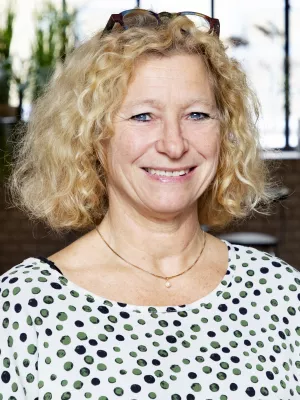
Karin Johansson
Professor

Two-year follow-up of temporal changes of breast edema after breast cancer treatment with surgery and radiation evaluated by tissue dielectric constant (TDC)
Author
Summary, in English
Background: Breast edema is reported as a common complaint after breast conserving surgery and radiotherapy (RT). Measurements of local water in skin and upper subeutis with tissue dielectric constant (TDC) technique have the potential to detect breast edema in patients after breast cancer treatment. Objective: The purpose of the present study was to examine development of edema in breast, axilla and upper arm in women treated with breast conserving surgery and RT during a 2-year follow-up. Method: Sixty-five patients have been included and measured at It) time-points (before RT. three time-points during RT. 2 and 4 weeks after RT and then 3.6, 12 and 24 months after RT). Breast edema was measured by tissue water content in skin and upper subcutis at both sides with MoistureMeterD. TDC. directly proportional to tissue water content to the effective depth of 2.5 mm. was evaluated. Definition of breast edema was determined as a TDC ratio 1.40 between Ihe treated and healthy breast. Results: The TDC measurements demonstrated breast edema already before RT. The mean TDC ratios at three weeks of RT and at 3 and 6 months post-RT were exceeding the edema threshold limit (i.e. TDC ratio l .40). The largest proportions of patients exceeding the edema threshold limit were found at three and six month post-RT (63%) and the smallest proportions at two years post-RT (28%). Concerning axillary dissection or sentinel node biopsy, no statistically significant differences were found between the groups at any of the 10 different measurement time-points. Conclusion: Cancer treatment related edema in the breast is very frequent at three to six months after RT but decreases at one to two years after RT. Differences in the surgical procedure are unlikely to change the incidence of breast edema during a two-year follow- up period.
Department/s
- Human Movement: health and rehabilitation
- BioCARE: Biomarkers in Cancer Medicine improving Health Care, Education and Innovation
Publishing year
2015
Language
English
Pages
15-21
Publication/Series
European Journal of Lymphology and Related Problems
Volume
27
Issue
73
Document type
Journal article
Publisher
European Group of Lymphology
Topic
- Cancer and Oncology
Keywords
- Breast edema
- Breast surgery
- Radiotherapy
- Tissue dielectric constant
Status
Published
Research group
- Human Movement: health and rehabilitation
ISBN/ISSN/Other
- ISSN: 0778-5569